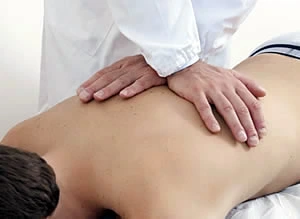Hiatal Hernia and GERD
Chiropractic & Applied Kinesiology for Hiatal Hernia and GERD
Hiatal hernia is often called the “Great Mimic” because it’s believed to mimic a wide range of health issues. However, Hiatal Hernia shows up so routinely during tests for digestive problems that it’s often unclear whether it’s actual the cause of symptoms or just a coincidental finding [1]. Digestive symptoms such as reflux, bloating, or discomfort are more likely to the result of wrong dietary habits, microbial imbalance, or low stomach acid. Regardless of the actual cause, the comprehensive protocols of Applied Kinesiology are designed to detect and correct the hiatal hernia itself.

Hiatal Hernia: Protrusion of the stomach above the diaphragm.
Gastroesophageal Reflux Disease: Reflux of the gastric contents into the esophagus.
Gastroesophageal Reflux Disease: Reflux of the gastric contents into the esophagus.
Symptoms attributed to Hiatal Hernia:
- Heartburn or acid reflux (GERD), especially when bending over or lying down
- Regurgitation of food or sour liquid
- Belching
- Chest tightness or pressure
- Discomfort behind the sternum, often at night
- Radiating pain to back, shoulders, neck, jaw, or ears
- Difficulty swallowing (dysphagia)
- Chronic cough or throat clearing
- Hoarseness or laryngitis
- Asthma-like symptoms / shortness of breath
- Cardiac-like symptoms
- Chest pain radiating into left arm
- Hiccups
- Bloating or nausea
- A sensation of fullness shortly after eating
- One scapula higher or more protruding than the other
- Digestive-related sleep issues
- Weight loss from food fear
Causes
Postural deviations of the spinal column are strongly correlated with the
development of hiatal hernia. In particular, spinal torsions and C-shaped
curves compromise the structural dynamics of the thoraco-abdominal region.
This makes it easier for the fundus of the stomach to push through the
diaphragm.
Proper diaphragmatic function is also a critical factor in both the prevention
and resolution of hiatal hernia. The diaphragm receives its neurological input
from two key spinal regions: the mid-cervical and lower thoracic spine.
Vertebral misalignments in these areas can lead to reflex inhibition of the
diaphragm, impairing its normal function.
Chiropractic / Applied Kinesiology Approach to Hiatal Hernia and GERD
Hiatal hernia is primarily a mechanical issue—and
mechanical problems require mechanical solutions. Applied Kinesiology
uses precise, gentle techniques to help guide the stomach back into
place, often bringing immediate relief. Chiropractic adjustments
complement this by restoring proper nerve flow to the diaphragm,
making the manual correction more effective and longer-lasting.
While these techniques can provide noticeable relief, true and lasting
improvement often depends on addressing deeper patterns, such as
long-standing dietary habits and lifestyle factors. An individualized,
holistic approach yields the best results.
[1].Kahrilas PJ, Kim HC, Pandolfino JE. “Approach to the patient with
presumed gastroesophageal reflux disease.” Gastroenterology
Clinics of North America. 2008;37(4):845–859. doi:10.1016/j.gtc.2008.09.002



